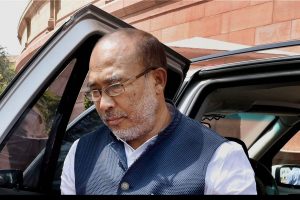The recent drop of the Indian rupee below the 84- per-dollar mark highlights a growing set of economic challenges for India, largely driven by external factors such as rising oil prices and the withdrawal of foreign investments from the equity market. While this development is concerning, it also reveals deeper structural issues in the Indian economy, particularly related to trade imbalances and inflationary pressures that are now being amplified by global geopolitical tensions. Oil prices have spiked dramatically in recent weeks, exacerbated by the conflict in West Asia.
For a country like India, which relies heavily on imported crude oil, such fluctuations present a significant economic risk. Higher oil prices directly impact inflation, widening the trade deficit, and leading to more outflows from foreign investors wary of macroeconomic instability. The combination of rising costs for imports and declining exports is further aggravating the already strained balance of payments, and this is having a clear impact on the rupee’s performance. A key factor compounding this issue is the shrinking trade surplus, which has seen its worst performance in months. India’s merchandise trade deficit hit a 10-month high in August, driven by increased gold imports and a slowdown in exports.
Advertisement
The export slowdown is particularly troubling, as it highlights weakening global demand and India’s inability to capitalise on the depreciation of its currency to boost overseas sales. Moreover, the current account deficit, now at 1.1 per cent of GDP for the April-June quarter, signals the need for stronger measures to ensure sustainable economic growth. One of the challenges that India’s policymakers face is how to manage these external pressures without sacrificing long-term economic stability. The Reserve Bank of India (RBI) has intervened to stem the rupee’s fall, selling dollars through state-run banks to prevent a sharp decline. However, this strategy can only be sustained in the short term, especially as India’s foreign exchange reserves, though robust, are not limitless. More crucially, interventionist policies can only do so much to stabilise the currency if the underlying issues ~ such as inflationary pressures from high oil prices and a widening trade deficit ~ are not addressed.
There is, however, some cautious optimism on the horizon. Market watchers expect that the RBI will move toward a rate cut as early as December, which may provide a degree of economic stimulus. This comes at a time when other major central banks, particularly the US Federal Reserve, have tempered expectations for aggressive rate hikes, potentially easing global financial conditions. Looking ahead, the rupee is expected to remain in a tight range over the next few quarters, thanks in part to prudent management by the RBI. However, India’s economic trajectory will largely depend on how well it navigates external shocks while maintaining domestic stability. Structural reforms aimed at improving trade performance, reducing dependency on oil imports, and attracting longterm foreign investment will be critical in ensuring that the current currency volatility does not derail the country’s broader economic progress.











